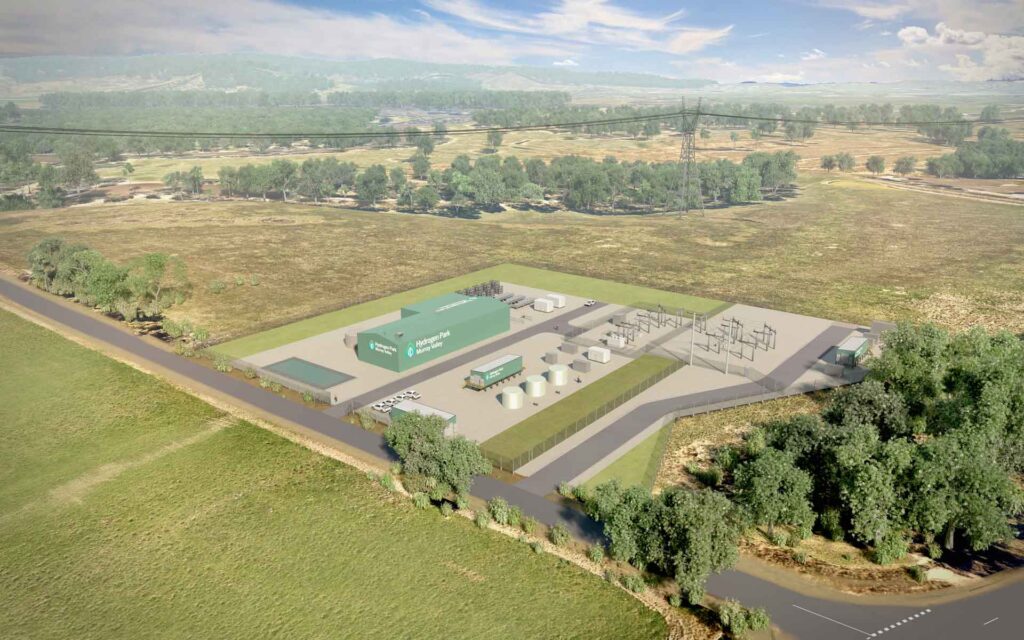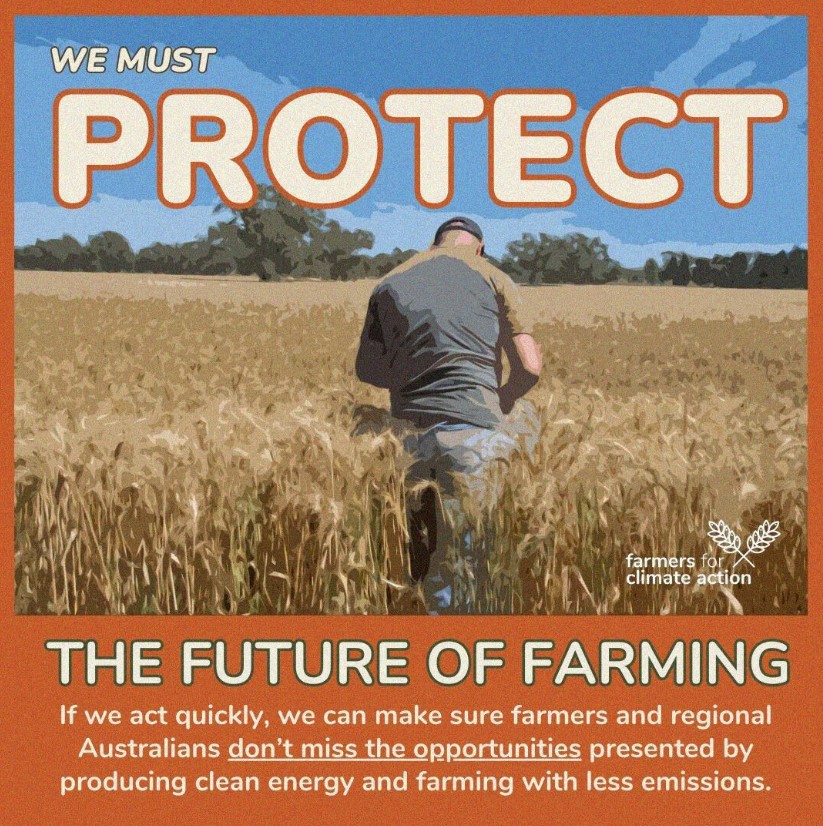The national and Victorian governments are fast tracking what they’re calling ‘renewable’ hydrogen via over $51 million in joint funding for an electrolyser in Wodonga, Victoria and its green credentials are genuine.

The use of the word ‘renewable’ instead of ‘green’ is confusing – green hydrogen is supposed to be hydrogen made without fossil fuels and the Wondonga project will use wind-generated power to create the hydrogen.
The announcement made by Federal Climate Change and Energy Minister, Chris Bowe, and Victorian Premier Dan Andrews last Friday has under-stated the importance of this project by not calling it green hydrogen.
Hydrogen doesn’t occur naturally on earth, so a chemical reaction, or heat, is required to separate it from other organic materials. Water, for example, is two parts Hydogen (H2) and one part Oxygen (O). It could be called ‘green hydrogen’ if the energy source used to separate the hydrogen and oxygen was itself green – preferably wind or solar.
Producing hydrogen by using fossil fuels, and that includes gas, to create the heat or chemical reaction is extremely polluting. In April 2022, the New Atlas reported that “fugitive hydrogen emissions can indirectly produce warming effects 11 times worse than those of CO2”.
“Hydrogen can be used as a clean energy carrier, and running it through a fuel cell to produce electricity produces nothing but water as a by-product. It carries far more energy for a given weight than lithium batteries, and it’s faster to refill a tank than to charge a battery, so hydrogen is viewed as a very promising green option in several hard-to-decarbonize applications where batteries won’t cut the mustard – for example, aviation, shipping and long-haul trucking,” the New Atlas reported.
But, there’s a but:
“But when it’s released directly into the atmosphere, hydrogen itself can interact with other gases and vapors in the air to produce powerful warming effects. Indeed, a new UK Government study has put these interactions under the microscope and determined that hydrogen’s Global Warming Potential (GWP) is about twice as bad as previously understood; over a 100-year time period, a tonne of hydrogen in the atmosphere will warm the Earth some 11 times more than a tonne of CO2, with an uncertainty of ± 5.”
The Engineering Institute of Technology says green hydrogen is made from the electrolysis of water and that process accounts for less than 0.1% of hydrogen today. “However, as we transition to low emissions and work towards a clean, healthy environment, green hydrogen might start to play a major role in making sustainable change,” the Institute says, hopefully.
“The separated CO2 is often emitted into the atmosphere which contributes to global heating. According to the International Energy Agency (IEA), the production of hydrogen is responsible for CO2 emissions of around 830 million tonnes of carbon dioxide per year.
“To combat these CO2 emissions, ‘green hydrogen’ was identified as a possible clean energy source alternative.
“Nearly 70 million metric tons of hydrogen used annually (for the production of petroleum and ammonia) is made by cracking natural gas through stream reforming which is a carbon-intensive method.”
Hydrogen from electrolysis is around two times more expensive than steam reforming – so gas is the cheaper option.
Investment in green hydrogen is on the rise and Australia is slated as one of the nations that will participate in the trend.
“Materials scientists and engineers are now working on better catalysts, membranes, and structural components, as well as manufacturing methods, that could reduce operating costs and make hydrogen from water part of the low-carbon economy.
“Available technology includes the current estimate that electrolysis accounts for roughly 4% of the hydrogen produced today, but the technology has seen a surge in interest in recent years.”
Keep in mind that green hydrogen is the only type produced in a climate-neutral manner making it critical to reach net zero by 2050, and that’s according to the World Economic Forum.
The World Economic Forum reports that: “Grey hydrogen is traditionally produced from methane (CH4), split with steam into CO2 – the main culprit for climate change – and H2, hydrogen. Grey hydrogen has increasingly been produced also from coal, with significantly higher CO2 emissions per unit of hydrogen produced, so much that is often called brown or black hydrogen instead of grey. It is produced at industrial scale today, with associated emissions comparable to the combined emissions of UK and Indonesia. It has no energy transition value, quite the opposite.
Blue hydrogen follows the same process as grey, with the additional technologies necessary to capture the CO2 produced when hydrogen is split from methane (or from coal) and store it for long term. It is not one colour but rather a very broad gradation, as not 100% of the CO2 produced can be captured, and not all means of storing it are equally effective in the long term. The main point is that capturing large part of the CO2, the climate impact of hydrogen production can be reduced significantly.”
So where does the 10MW electrolyser being funded by the Victorian and Federal Governments fit in?
We know that it will be eight times larger than the biggest electrolyser currently operating in Australia and the best news is that the hydrogen will be created using wind generated energy.
“It will initially be used to blend green hydrogen into gas networks to supply around 40,000 homes and 20 industrial sites with cleaner energy and create up to 55 jobs in its construction phase,” the media release from Federal Climate Change Minister Chris Bowen reported last Friday
It will be powered by renewable energy from a Victorian wind farm and demonstrate renewable hydrogen’s compatibility with existing gas infrastructure.
Renewable hydrogen will be distributed through existing natural gas pipelines at mixes of up to 10 per cent. The project will also look to identify other opportunities to use renewable hydrogen in industrial and transport applications, maximising the value of the renewable hydrogen and helping drive decarbonisation across the local economy.
The project at North East Water’s local wastewater plant will be jointly funded by the Australian Renewable Energy Agency, the Clean Energy Finance Corporation and the Victorian Government.
Government financing will support both capital costs and assist with bridging operating costs for the project.
Construction will commence this year and the site will be operational by late 2025.
“The Australian Government is committed to creating jobs for great regional cities like Wodonga, and building experience making and using renewable hydrogen will create economic opportunities in the net zero transformation,” Minister Bowen said.
“The move to cleaner energy brings enormous job opportunities and both the Victorian and Commonwealth Governments are seizing that opportunity.”
Victorian Minister for Climate Action Lily D’Ambrosio said the project represented a significant step to build scale and capability for renewable hydrogen.
“Having the east coast’s largest electrolyser just off the Hume Highway in Wodonga will provide exciting opportunity for industry and renewable energy for years to come.
The project is a joint investment of $12.3 million from the Victorian Government, $36.1 million from the Australian Renewable Energy Agency (ARENA), with additional financial backing from the Clean Energy Finance Corporation (CEFC).
The recent State of the Hydrogen report reinforced that Australia has the foundations to become a global leader in renewable hydrogen and there is an urgent need to speed up priority projects and hubs to compete internationally.
A $2 billion Hydrogen Headstart program was announced in the May Federal Budget to scale up development of Australia’s renewable hydrogen industry.
An additional $500 million federal funding is going to developing regional hydrogen hubs at Gladstone, the Hunter, Bell Bay and the Pilbara.
This is one of Australia’s largest renewable hydrogen plants to be operated by the Australian Gas Infrastructure Group (AGIG).
The project builds on the Australian Renewable Energy Agency’s (ARENA’s) existing work in renewable hydrogen.
According to AGIG, the renewable hydrogen produced “will displace natural gas supplied to local customers and industry at blends of up to 10 per cent, reducing carbon emissions with no change to amenity for gas users.
“With more than 40,000 connections to the local gas network, the project will supply hydrogen to an estimated 85,000 people spanning the border of Victoria and NSW. At a blend of 10 per cent, the project is predicted to cut approximately 4,000 tonnes of CO2 each year.
“Wodonga’s strategic location along a major road freight route also provides access to other end use markets, particularly in heavy vehicle transport.
“Mars Petcare Australia will purchase Renewable Gas Guarantee of Origin certificates, generated by the project and accredited by GreenPower, to match the gas use of their local pet food factory in Wodonga.
“Hydrogen Park Murray Valley is the second 10 MW project supported by ARENA to reach financial close after the first, Engie’s Project Yuri in the Pilbara, achieved the milestone in September 2021. Both were funded as part of a $103 million competitive funding round for commercial scale hydrogen electrolyser projects.
ARENA CEO Darren Miller said the project is paving the way for renewable hydrogen in Australia.
“It’s essential to scaling up Australia’s renewable hydrogen industry that we get these first-generation projects up and running,” Mr Miller said.
“Producing renewable hydrogen on this scale has never been done in Australia. The lessons we learn here will help inform our hydrogen industry as it grows from its early stages to a pillar of the net zero economy.
“ARENA has been at the forefront of advancing renewable hydrogen projects and will continue to play an integral role, as we support the Australian Government’s Hydrogen Headstart program and other large-scale projects.
“What’s exciting about this project is that it will be producing hydrogen that reduces local emissions from day one, with the potential to supply additional markets as they move towards net zero.”
This project gets The Point’s thumbs up!


